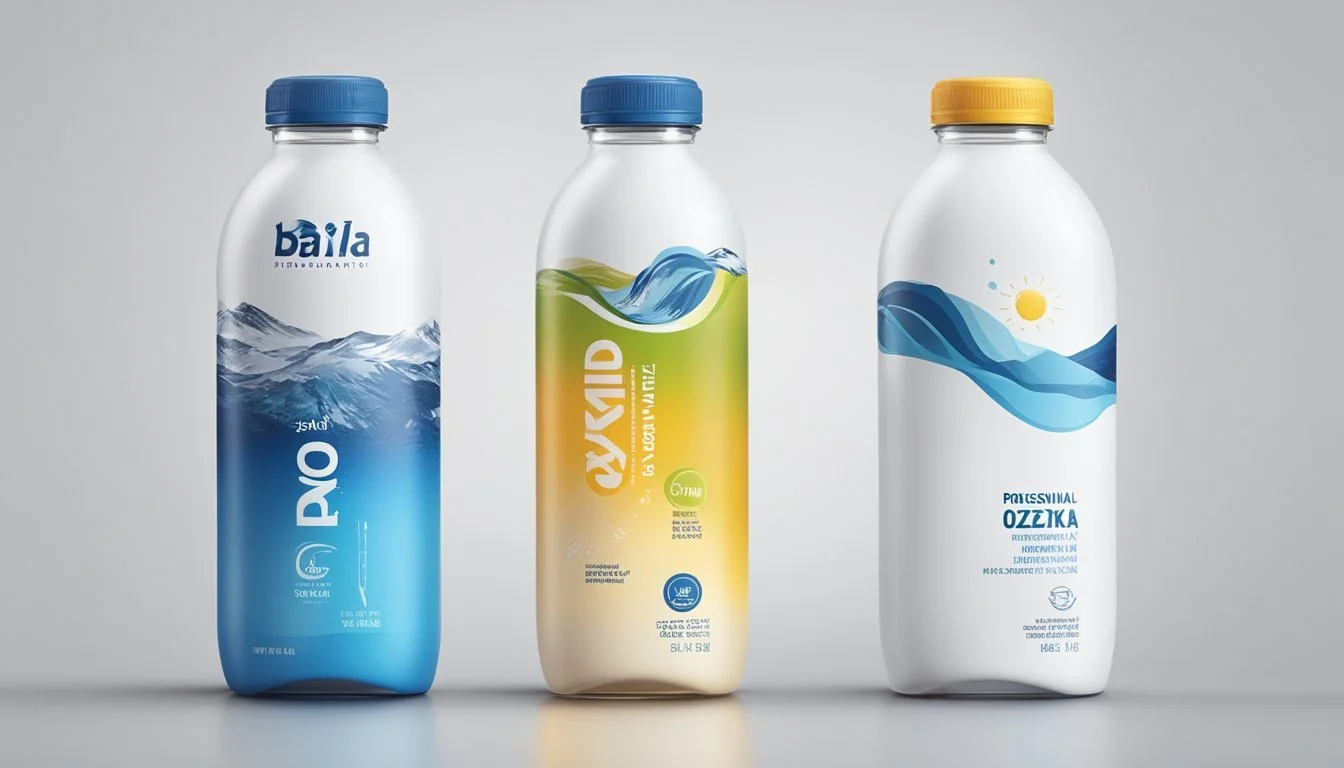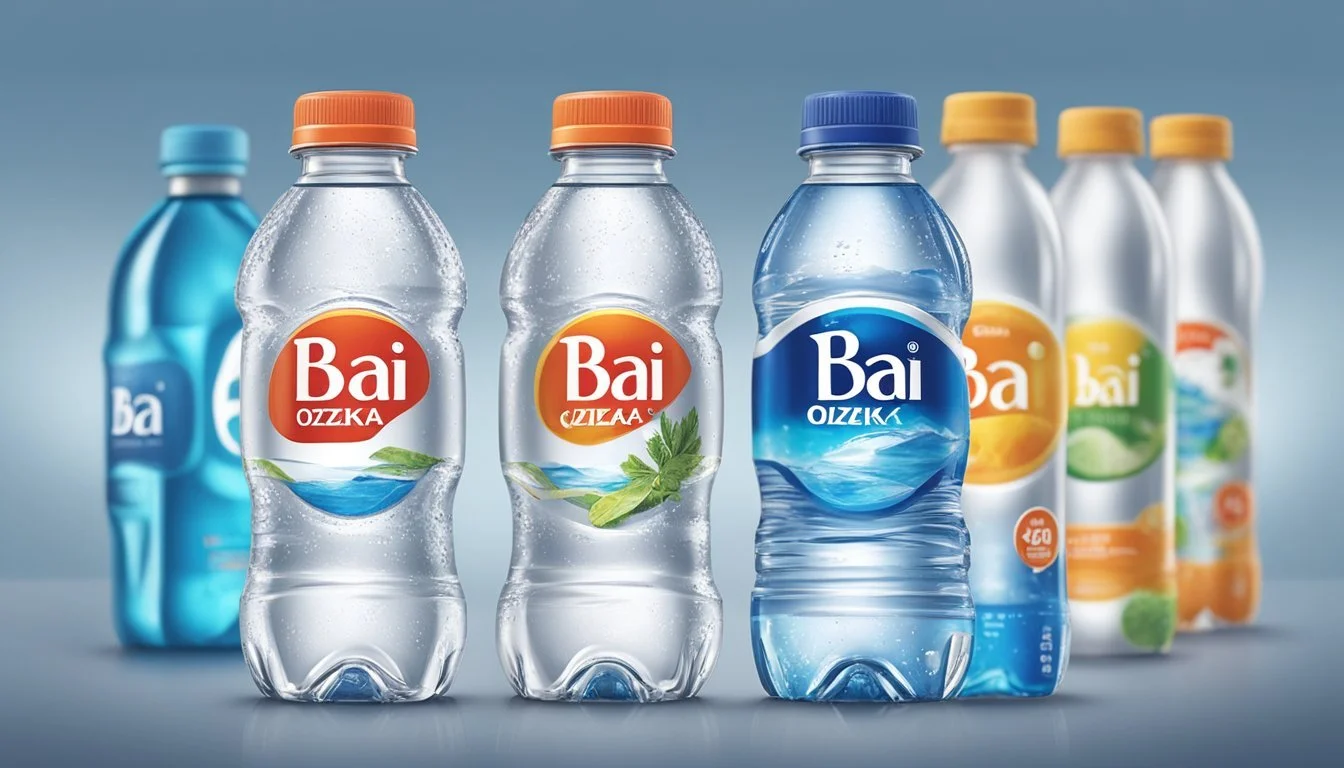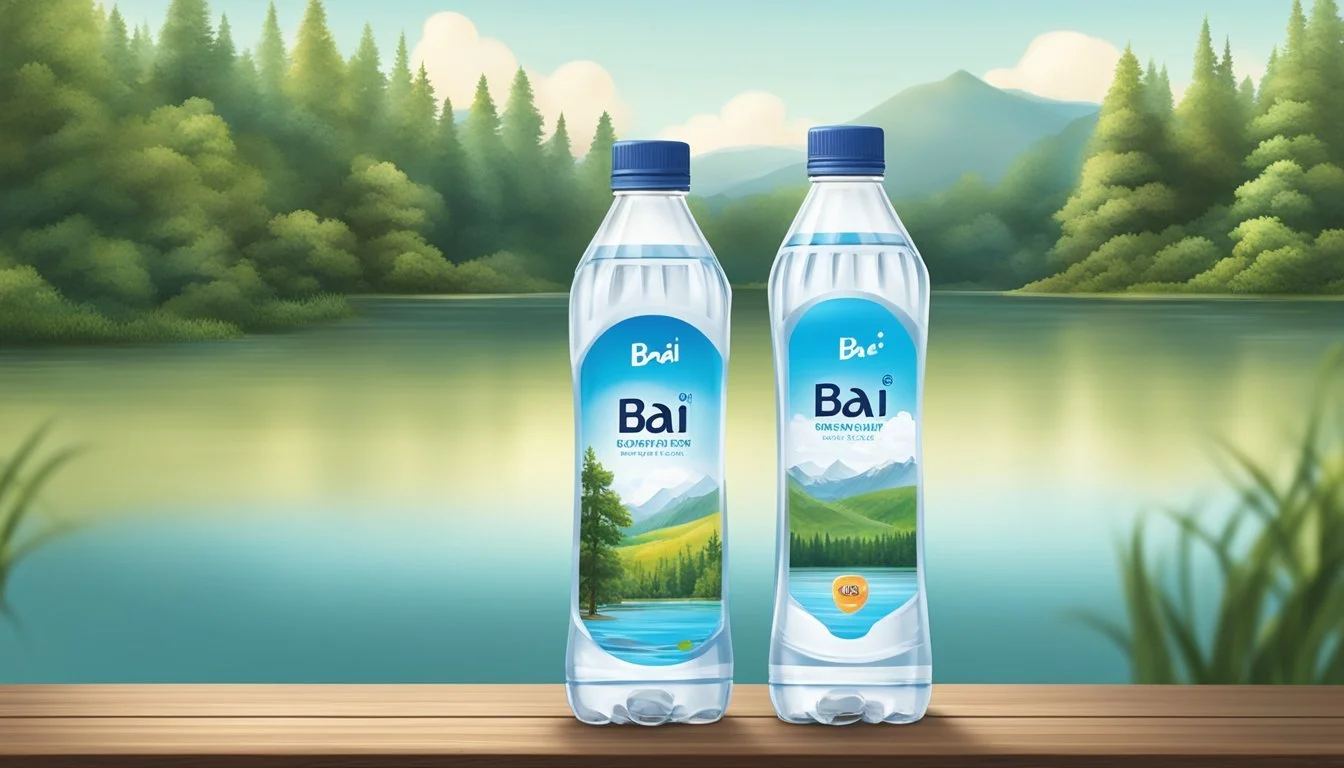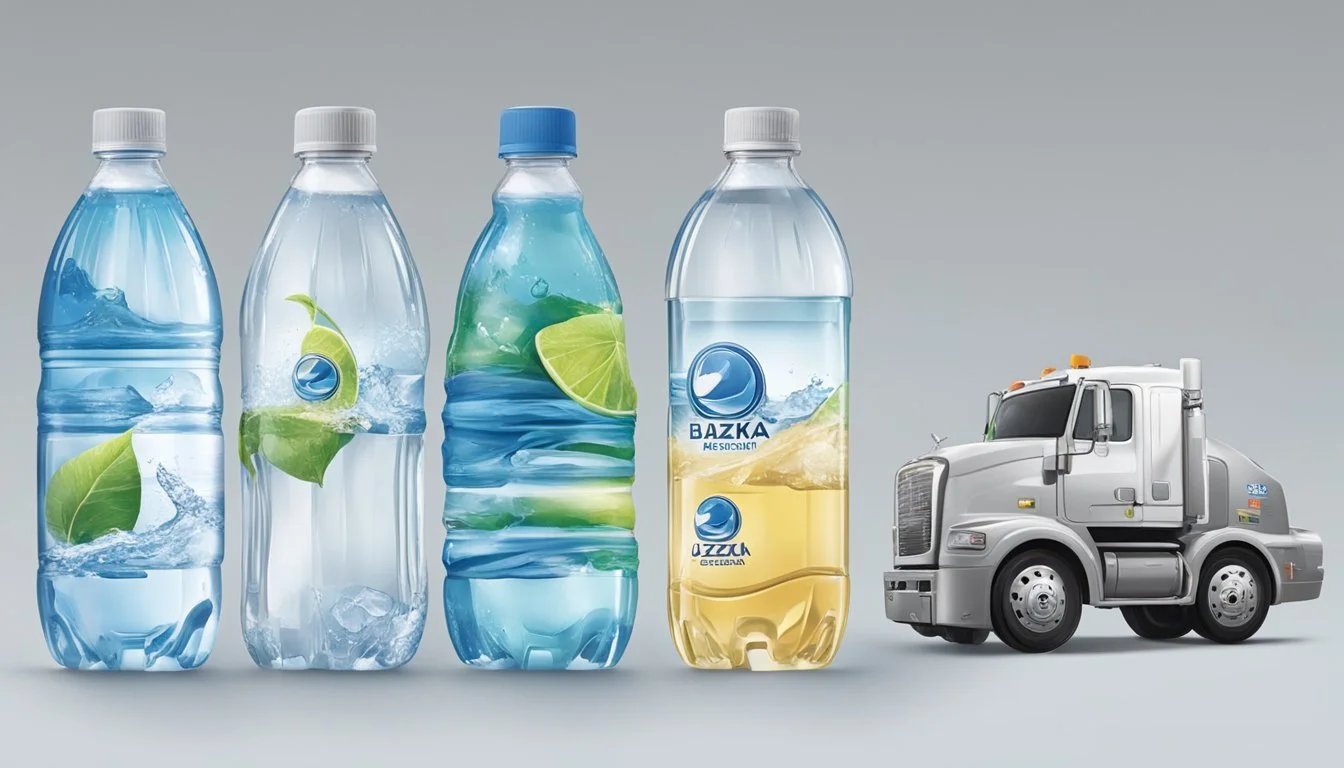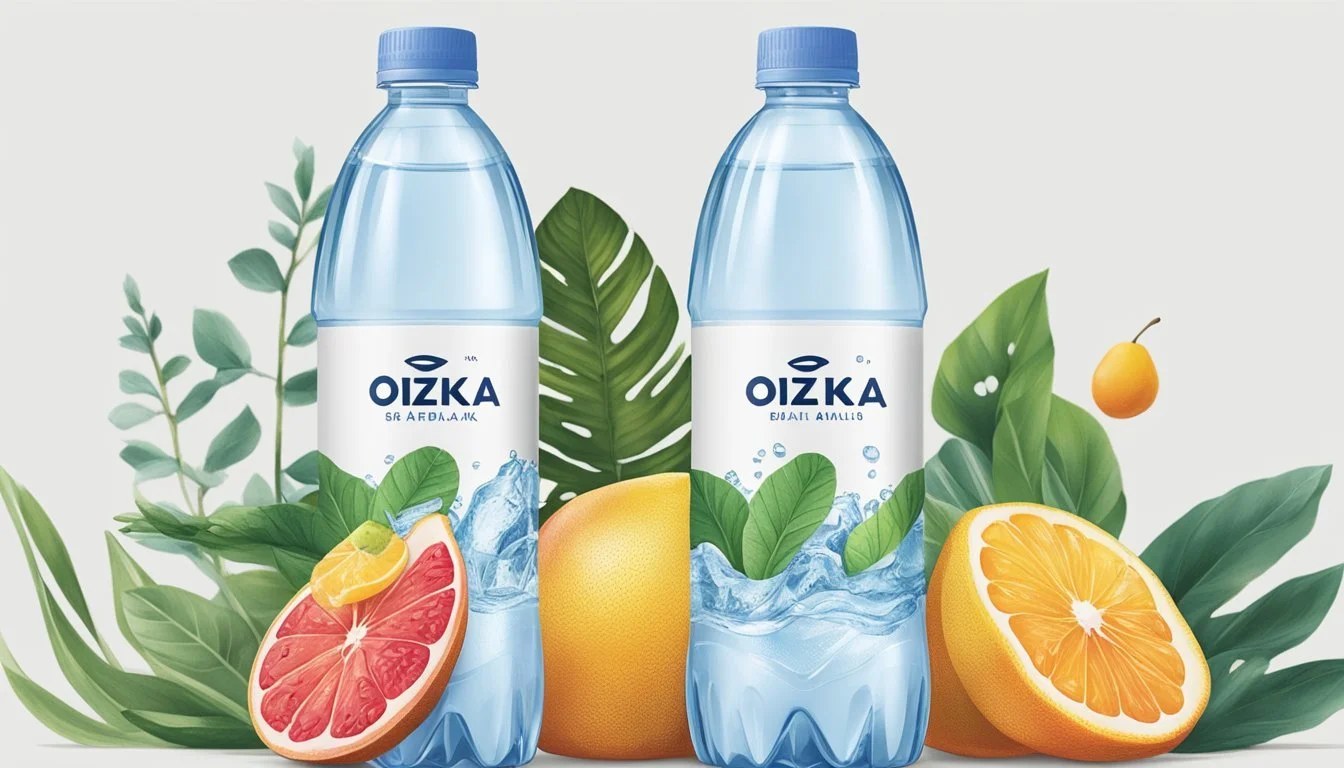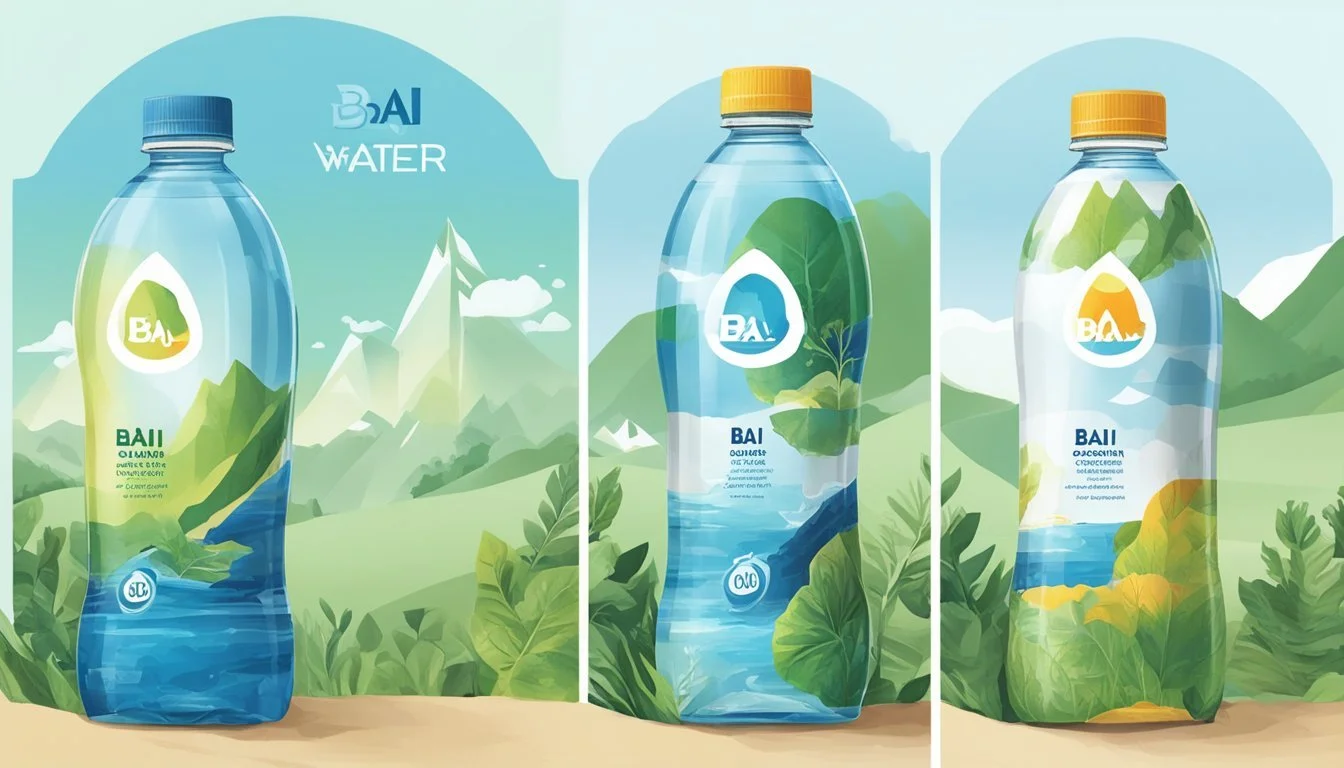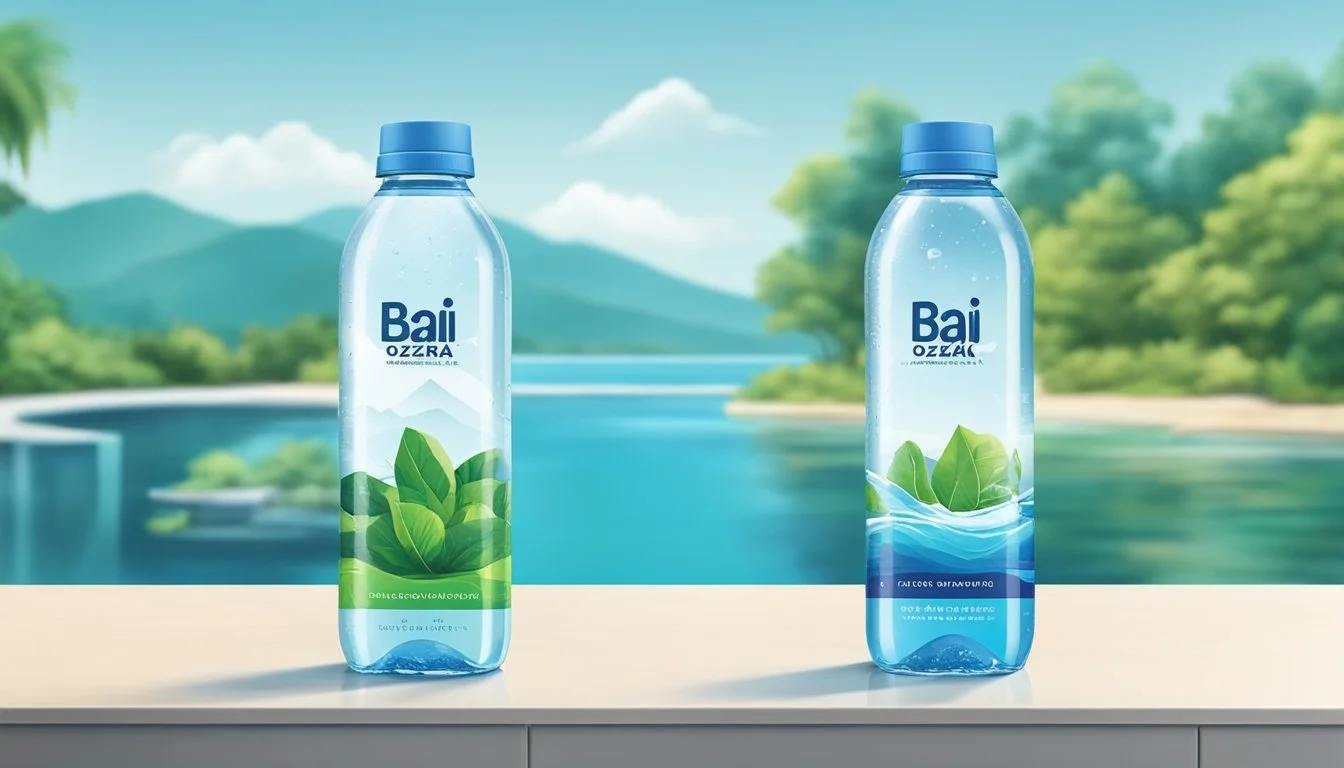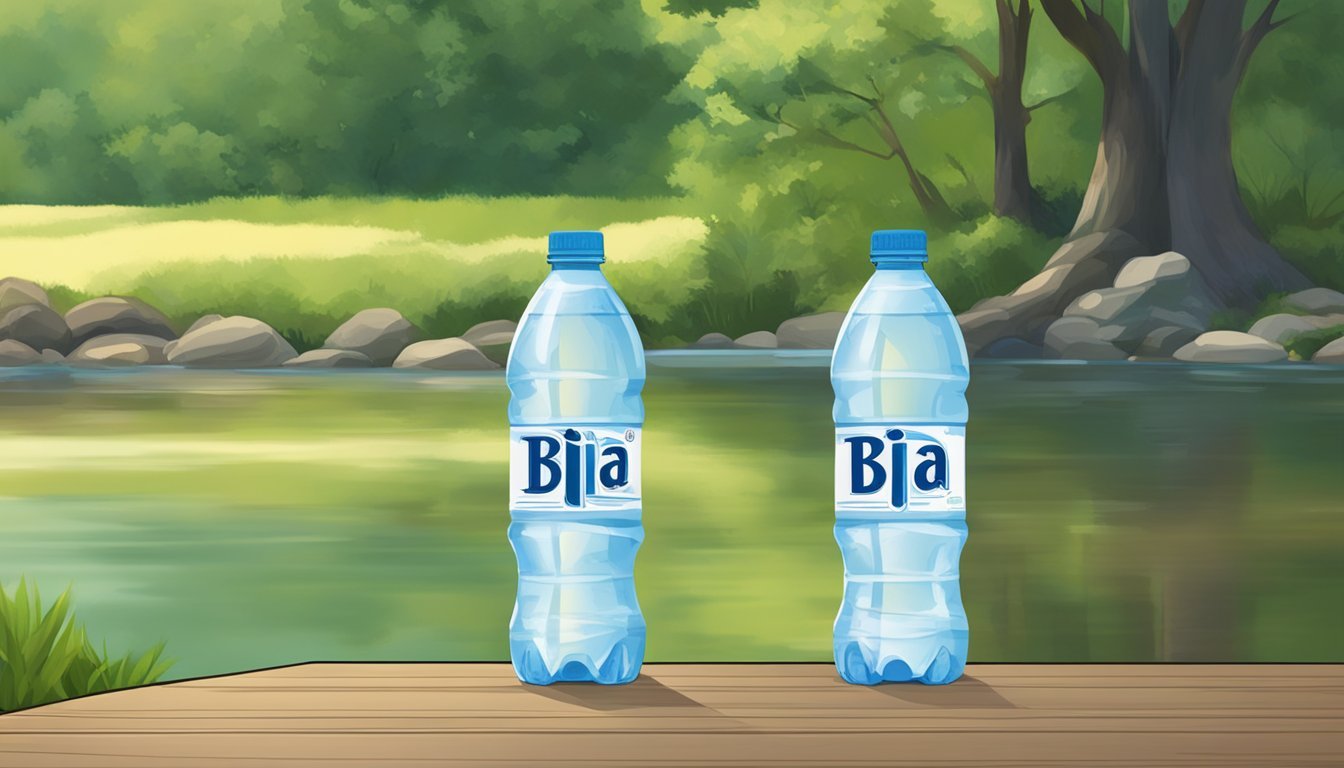Bai vs. Ozarka Water Comparison
Unveiling the Superior Choice
When deciding between different brands of bottled water, consumers face a plethora of options, each with its own set of benefits and flavor profiles. Two such brands, Bai and Ozarka, offer distinct drinking experiences. Bai touts itself as a source of enhanced water with added antioxidants and minimal sugar content, aiming to cater to health-conscious consumers seeking more than just hydration. On the other hand, Ozarka, sourced from natural springs in Texas, prides itself on offering a natural and pure taste without the frills of additional ingredients but with the promise of locally sourced purity.
The debate over which bottled water is better isn't just a matter of taste, but also involves consideration of various factors including source, production methods, and the presence of additives. While Bai focuses on added health benefits with its inclusion of antioxidants from coffee fruit extract and tea extract, Ozarka emphasizes the natural origin and purity of its water. Both brands, therefore, present their unique selling points that resonate with different consumer preferences.
In evaluating Bai against Ozarka, it's essential to consider individual hydration needs, taste preference, and value placed on product enhancements versus natural sourcing. The decision ultimately rests with the consumer's priorities, whether they align with the added benefits presented by Bai or the straightforward simplicity offered by Ozarka.
The Evolution of Bottled Water
Bottled water has seen a dramatic transformation from a necessity for safe drinking in areas with poor water quality to a global commodity representing convenience and, in some cases, status. Brands have proliferated, catering to consumer demand for variety, including spring, mineral, sparkling, and flavored waters.
In the early days, it was a simple and functional choice. Now, states and companies stamp their identity on bottles, emphasizing the source and purity. Brands such as Bai and Ozarka highlight their unique origins, tapping into regional pride and the market's desire for authenticity.
As the industry grew, organizations like the International Bottled Water Association (IBWA) emerged to standardize practices and advocate for the sector, ensuring consumers receive a safe and consistent product. Here's a brief timeline showing the evolution:
Early 20th century: Localized bottling starts, focusing on natural springs.
Mid-20th century: Technological advancements improve safety and shelf life.
1970s-1980s: The market explodes, introducing plastic bottles.
1990s: Brands become lifestyle choices, not just beverages.
2000s: Premium and functional waters enter the scene.
Present: Sustainability becomes a growing priority amongst brands and consumers.
Consumers' increasing awareness of environmental impacts is also shaping the future of bottled water. Biodegradable packaging and reduced water footprint are the industry's current benchmarks, driven by a market that is more conscious and discerning than ever before.
Bai vs. Ozarka: Understanding the Brands
Bai positions itself as an antioxidant infusion company that offers beverages with exotic fruit flavors. Each Bai drink is infused with coffeefruit, which is known for its antioxidant properties, as well as being flavored with various fruit juices. They contain no artificial sweeteners and are relatively low in calories and sugar. The company was established with a focus on delivering a product that is both flavorful and healthier, compared to traditional sugary drinks. Bai was eventually acquired by the beverage giant Coca-Cola, which has extended its reach.
Ozarka Natural Spring Water, on the other hand, is a brand of bottled water that has its origins in Texas. As a product, it offers natural spring water that is meant to deliver a clean and refreshing taste. The brand ensures the water is free from contaminants and maintains a balanced mineral content for a crisp taste. Ozarka has two different sources: one is the brand of Texas spring water, and the other is a spring water product owned by Nestlé, a Swiss company considered to be the largest distributor of bottled water in the world.
Brand Owner Product Type Key Attributes Bai Coca-Cola Antioxidant Infusions Exotic fruit flavors, low-calorie, coffeefruit infusion Ozarka Nestlé (partially) Natural Spring Water Clean taste, naturally sourced, balanced mineral content
Bai and Ozarka represent two distinct choices within the bottled beverage market, one focusing on a health-conscious blend of fruit flavors with antioxidant benefits and the other on providing pure water straight from natural springs without added ingredients. Each brand has its own unique selling points, aiming to satisfy different consumer needs and preferences.
Source and Quality of Water
When comparing Bai and Ozarka bottled water brands, evaluating the source and quality of water is crucial.
Bai does not directly market itself as a water brand but rather as an "antioxidant infusion" beverage company. Their drinks typically consist of flavored water infused with antioxidants from coffee fruit and other natural ingredients.
Ozarka, on the other hand, is known for sourcing its water from natural spring water locations in Texas. The company offers products like Ozarka Drinking Water and Ozarka Spring Water. It emphasizes that its spring water is sourced from several Texas locations, which provide a fresh and naturally occurring supply.
In the context of bottled water industry standards, companies like Evian and Fiji Natural Artesian Water set benchmarks for natural purity and taste. Evian Water, sourced from the French Alps, is a type of mountain spring water known for its mineral content and balanced pH. Fiji Water claims to have a unique mineral profile, acquired as the water filters through volcanic rock.
The term spring waters refers to water that is collected as it flows naturally to the earth's surface or via a borehole that taps into the underground source. Both Arrowhead Mountain Spring Water and Ice Mountain Natural Spring Water are known brands with sources commonly believed to meet the standards of spring water quality.
Analyses of bottled water like Ozarka involve testing for contaminants and consistency of mineral content, measuring factors like pH level and the presence of trace minerals to assess overall quality against industry benchmarks. Bai's focus on enhanced beverages shifts the comparison slightly as the water quality is also influenced by the additives used to achieve the desired antioxidant effect.
Health and Safety Regulations
Bottled water, including brands such as Bai and Ozarka, is regulated to ensure it meets health and safety standards. The U.S. Food and Drug Administration (FDA) sets these regulations to protect public health. They mandate that bottled water must be tested for contaminants such as lead, heavy metals, and arsenic, which can pose health risks if present in high levels.
PFAS chemicals, a group of substances linked to adverse health effects, are also a concern. The FDA, relying on scientific evidence, guides the permissible levels of such chemicals in bottled water. Manufacturers must adhere to strict limits for contaminants and conduct regular testing to prove compliance.
Bottled water companies are required to provide quality reports to consumers. Bai and Ozarka, like other brands, produce these reports detailing the results of their water testing, which include information about the presence of any PFAS chemicals or heavy metals.
The safety and quality of bottled water are also subject to state regulations, which can sometimes be more stringent than federal standards. These laws work in tandem to ensure that the bottled water on store shelves is safe for consumption.
Ozarka: Owned by Nestlé Waters, it follows both FDA and state regulations, sourcing water from springs and ensuring the natural mineral content doesn't surpass safety guidelines.
Bai: Primarily known for antioxidant-infused beverages, Bai ensures its water meets required health standards by conforming to FDA's requirements for quality and safety.
It's important that consumers stay informed about the water they drink by reviewing these quality reports and understanding the regulatory requirements that brands like Bai and Ozarka must follow for the sake of public health.
Taste Profile and Palate Comparison
Selecting a bottled water involves considering the taste profile, which is influenced by factors like minerals, electrolytes, and natural flavors. This section will compare the distinct taste characteristics of Bai and Ozarka bottled waters.
Bai Water Taste
Bai water is known for incorporating antioxidant-infused flavors into its product line. Customers often detect slight fruit undertones, which stem from natural flavors added to the water. Bai typically includes minerals or electrolytes subtly, aiming not to overpower the clean water taste, but to complement it with a health-focused approach.
Ozarka Water Taste
In contrast, Ozarka emphasizes its natural spring source, promising a crisp and refreshing taste that one might expect from water harvested in the heart of Texas. The presence of naturally occurring minerals in Ozarka water can contribute to a unique and notable taste, often described as "fresh" or "pure," without the addition of external flavors or enhancements.
Nutritional Content
When comparing the nutritional content of Bai and Ozarka bottled waters, one must consider the presence of minerals, electrolytes, vitamins, and calories.
Bai Water:
Calories: Low-calorie with only 10 calories per bottle.
Sugar: Contains just 1 gram of sugar.
Sweeteners: Free from artificial sweeteners.
Ingredients: Contains antioxidants derived from coffee fruit extract and tea extract, beneficial for health.
Gluten-free: Yes, ensuring suitability for those with gluten sensitivities.
Vegan: Bai Water does not include animal-derived ingredients.
Ozarka Water:
Calories: Typically considered zero-calorie, though variations in mineral content can exist.
Minerals: Ozarka has a balanced mineral content, which can include naturally occurring electrolytes beneficial for hydration.
Gluten-free: As with most pure bottled waters, Ozarka is also gluten-free.
Vegan: Given that it is water, it is inherently vegan.
Nutrient Bai Water Ozarka Water Calories 10 calories per bottle Zero calories Sugar 1 gram per bottle No sugar Sweeteners No artificial sweeteners No artificial sweeteners Antioxidants From coffee fruit and tea extract Not a significant source Gluten-Free Yes Yes Vegan Yes Yes
It is important to note that the nutritional benefits of bottled water largely depend on the source and the processing it undergoes. Bai Water's unique addition of antioxidants provides a slight differentiation from most bottled waters, including Ozarka. Conversely, Ozarka's appeal lies in its natural mineral content, contributing to its taste and potential replenishing properties without the addition of calories or sweeteners.
Packaging and Environmental Impact
When assessing bottled water brands, packaging plays a significant role in their environmental impact. Bai and Ozarka have distinctive packaging choices that contribute differently to their ecological footprints.
Bai beverages are typically contained in PET (polyethylene terephthalate) plastic bottles, renowned for being lightweight and recyclable. However, concerns around the presence of BPA (Bisphenol A) in plastics can dissuade consumers due to potential health risks. Bai's commitment to being a BPA-free brand alleviates these concerns.
In contrast, Ozarka, sourced from springs in Texas, uses PET bottles for its smaller sizes and its single-serving bottles are also BPA-free. Yet, the crux of the matter remains the manufacturing and disposal of these plastic water bottles. Ozarka encourages recycling to cut down the environmental load, but the reality is that not all bottles are recycled, leading to accumulation in landfills.
Both brands' reliance on plastic bottles raises the inevitable environmental impact. Production involves high energy consumption and CO2 emissions. While both brands claim to promote recycling initiatives, the actual recycling rates of plastic bottles are often lower than expected.
Recently, there has been a surge in the popularity of boxed water as a more sustainable packaging alternative, reducing the reliance on fossil fuels for production and oftentimes utilizing recyclable materials.
Packaging Type Material Recyclability BPA Presence Notable Impact Bai PET Plastic High BPA-Free Lower transport weight Ozarka PET Plastic High BPA-Free (small bottles) Encourages recycling
Each brand's footprint extends beyond just production and disposal; the full lifecycle must consider transport, usage, and potential reuse. Consumers and companies alike bear responsibility for the environmental impact of their choices in bottled water consumption.
Consumer Perception and Market Presence
Bai and Ozarka represent two distinct choices within the bottled water market. Consumers frequently align their preferences with factors such as taste, brand reputation, and perceived health benefits. Regarding hydration, a fundamental purpose of bottled water, both brands offer a product meeting the needs of consumers seeking to maintain adequate hydration levels.
Bai, with its added fruit flavor infusions and antioxidants, appeals to consumers desiring a flavored water experience with a health-conscious edge. The brand has established a strong presence by marketing their products as a hydration option that does not compromise on taste or wellness benefits.
In contrast, Ozarka, sourced from springs in Texas, is rooted in a natural image and appeals to consumers looking for a more traditional water taste. They emphasize the purity and regional origin of their water, which aligns with consumers' growing preference for locally-sourced products. Ozarka's market presence is strong among those who value unflavored and straightforward water for hydration.
Bai's Market Presence:
Flavored water category
Focus on health-conscious consumers
Nationwide distribution
Ozarka's Market Presence:
Natural spring water category
Emphasis on local sourcing and purity
Regional appeal, with a strong presence in the American South
Both brands have carved out their niches in the water brand spectrum, with Bai catering to a niche market seeking innovation in flavor and health properties, and Ozarka serving consumers loyal to natural and unadulterated water options.
Further Considerations
When comparing Bai and Ozarka bottled waters, it is imperative to look beyond mere taste and hydration. This section delves into the breadth of product options, the reach of distribution networks, and the ethical practices of the companies behind the brands.
Variety and Options
Bai stands out for its variety of flavors. The brand's offerings include antioxidant infusion drinks, combining exotic fruit flavors with the power of antioxidants derived from the coffee fruit. Additionally, some Bai products contain caffeine, providing an energy boost alongside hydration.
Ozarka, on the other hand, focuses on delivering local water with natural electrolytes. Its product line may not be as extensive in flavor or added ingredients, but it caters to those seeking a pure and simple bottled water experience.
Accessibility and Distribution
The distribution of these brands is key to their accessibility. Bai's flavored water products are available across a wide range of retail outlets, including online platforms, demonstrating an extensive distribution network. Ozarka primarily serves the Southern United States, relying on its reputation as a provider of regional, natural spring water.
Corporate Responsibility
Transparency regarding corporate responsibility is crucial for consumers. There have been instances where corporate malfeasance plays a role in the public perception of a brand. Both Bai and Ozarka are under the wings of larger entities, with Bai owned by Keurig Dr Pepper and Ozarka by Nestlé Waters North America.
Bai's parent company has made commitments to reduce environmental footprints and improve the social impact of its products. Similarly, Ozarka's parent, Nestlé Waters North America, has faced scrutiny over its water sourcing practices and has taken steps to improve its sustainability efforts and community relations.
Consumers may weigh these aspects differently, but they are integral to an informed choice between Bai and Ozarka bottled waters.
Bottled Water Alternatives
When considering alternatives to bottled water like Bai or Ozarka, one has a variety of options. Tap water is the most direct and cost-effective substitute. It's widely available and can drastically cut down on plastic waste. However, the quality and taste of tap water can vary by location.
Purified water, which has been treated to remove chemicals and contaminants, offers a taste and quality that can be more consistent than tap water. Systems for home water purification are available and provide a long-term cost-saving solution, although there's an initial investment in equipment.
Filtered water, accessed via a jug or faucet attachment, is another popular choice. These filters can remove certain taste-averse minerals and some potential pollutants, improving both safety and flavor.
Carbonated water presents a refreshing alternative and comes in a variety of brands such as La Croix. These sparkling waters offer a different mouthfeel and often include a range of natural flavorings. La Croix, specifically, is known for being calorie-free, sodium-free, and sweetener-free.
For those seeking both hydration and energy replenishment, sports drinks such as Gatorade provide electrolytes and carbohydrates that may benefit athletic performance or recovery.
Here is a breakdown of these alternatives:
Alternative Key Benefits Considerations Tap Water Cost-effective, widely available Quality varies by location Purified Water Consistent quality Requires equipment Filtered Water Improved taste, reduces pollutants Requires regular filter changes Carbonated Water Satisfying, flavor variety May not suit all taste preferences Gatorade Electrolytes, energy boost Contains sugars and calories
Each option serves a different need and preference, allowing consumers to choose based on their individual requirements and environmental considerations.
Final Thoughts
When comparing Bai and Ozarka bottled water brands, consumers should consider the water source, taste, and their specific hydration requirements.
Ozarka, sourced from natural springs in Texas, prides itself on delivering a fresh and regional taste. It appeals to those who prefer spring water with a composition of naturally occurring minerals. Bai, on the other hand, is known for its antioxidant-infused beverages which offer a range of flavored water options.
Evaluating other market contenders, such as Fiji with its tropical source and Smartwater with its vapor distillation process, it's evident that brand choice often aligns with taste preference and perceived health benefits. For intense hydration needs, Essentia has a significant following due to its high pH and electrolyte-enhanced formulation. Voss, recognized for its distinct bottle design, could appeal to consumers focusing on aesthetics as much as hydration.
For everyday hydration, both Bai and Ozarka provide quality choices, yet neither should be considered a perfect fit for all. They don't directly compete with therapeutic brands like Essentia, nor do they match the exotic origins of Fiji or the iconic status of Voss.
Consumers may not find the sophisticated purification process associated with Smartwater nor the mass-market presence of Deer Park within Bai and Ozarka. Pure Life, while mentioned for comparison, reflects a common option without specialty features.
In the pursuit of hydration, individual preference will dictate the best option, and one should weigh the key factors: purity, taste, and overall purpose of consumption.

